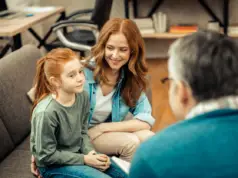It is a fact that that 21st-century life for many people can be full of difficulty and stress. From work and financial concerns to ever more complicated family dynamics, there seems to be far more to contend with than previous generations experienced. And not just adults are feeling the effects.
According to the Center for Disease Control, one in five American children are diagnosed with a mental disorder in any given year. That equates to a remarkable 17 million youngsters. Here, we take a look at the growing issue of mental health problems in children, and what is being done to help them cope with modern day life.
Mental health disorders
The task of identifying, diagnosing and treating mental health conditions is always difficult, and doubly so in the case of children. Physical health problems, such as a broken leg or a kidney disorder, are comparatively straightforward. Diagnosis can be swiftly made, and a course of treatment agreed in a matter of minutes.
When it comes to a mental condition such as depression or schizophrenia, the process is far more complicated. Despite the vastly superior understanding of mental health conditions, there is still a certain stigma attached to admitting that you or a loved one might be a sufferer. Looked at objectively, there is no logic behind this – if you suspect that you or your child has a heart condition, you go straight to the doctor to get checked out. Why do we still have a different attitude to mental health?
Common conditions in children
A variety of mental health conditions are becoming increasingly common in children. Each has a range of causes and potential treatments. Some of the most common are as follows:
- Anxiety disorders – the child responds to certain situations with dread, nervousness and fear. Often, there are physical symptoms, including sweating and elevated heartbeat.
- ADHD – everyone has heard of attention deficit / hyperactivity disorder, but you might not spot the symptoms. Children affected by ADHD find it difficult to concentrate and follow instructions. Typically, they are easily bored and can behave impulsively. Of course, every child can sometimes display symptoms like these, which is why it can be difficult to diagnose.
- Disruptive mood dysregulation disorder – this is a mood disorder that is specific to children and adolescents that bears some similarities to bipolar disorder. The condition is exhibited by mood swings and persistent angry outbursts.
- Learning and communication disorders – children with these kinds of conditions find it difficult to process information and to express their own thoughts and ideas.
- Disruptive behavior disorders – these can be the highest profile conditions, as they have the greater impact on others. Children suffering from these disorders have a tendency to defy authority and are often disruptive.
- Tic disorders – are shown when children exhibit sudden, uncontrollable movements, sounds or twitches. These are often the external manifestation of some other latent problem.
These are just a few of the categories of mental health problems being encountered in a growing number of children. So what is being done to help them?
Treating mental disorders
It cannot be stressed enough that conceptually, there is less difference between physical and mental disorders than people think. Let’s think about that kidney disorder again. The chances are, the doctor will suggest some form of medication, advise dietary or lifestyle changes, or perhaps proceed with a combination of the two.
In the case of a broken leg, surgery, medication and a course of physiotherapy will probably be appropriate. The same applies with mental health conditions, but the problem is that research into the best treatments for different conditions is at an earlier stage of development.
Some conditions, such as depression, are often caused by a chemical imbalance that can be resolved with medication, while others are better treated with a course of therapy. Specialist organizations such as Newport Academy are leading the way in providing a blended approach that prescribes the most effective treatment for every patient.
Facing mental disorders head on
The rise in childhood mental health disorders is alarming, but the fact that diagnoses are on the increase should be seen as a positive. Only by facing up to mental health, destigmatizing the subject and treating it with the same objectivity as physical health can the problem be managed. It is a long road, but the indications are good that as a society, we are going in the right direction.











